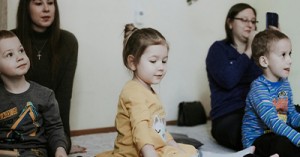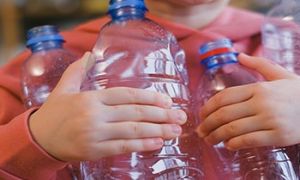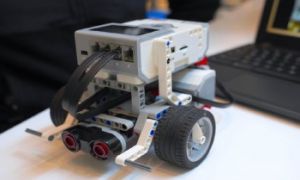Quality Area 1 of the National Quality Standard focuses on Educational Program and Practice. This area ensures that the educational program and practice are stimulating, engaging, and enhance children's learning and development. The following article provides a list of critical reflection questions to guide thinking and practice for QA1.
Standard 1.1: Program
-
How do our programs reflect the individual needs, interests, and abilities of each child?
-
How do we ensure that the educational programs are based on an approved learning framework and support children's development?
-
How do we document and evaluate children's learning and progress effectively?
-
How do we incorporate feedback from children, families, and colleagues into our program planning?
-
How do we ensure that our programs are inclusive and respectful of diversity?
Standard 1.1.1: Approved Learning Framework
-
How do we ensure our educational program aligns with an approved learning framework?
-
How do we reflect the principles, practices, and outcomes of the approved learning framework in our daily practice?
-
In what ways do we incorporate children’s interests and strengths into our planning?
-
How do we use the framework to assess and guide our goals for individual and groups of children?
Standard 1.1.2: Child-Centered
-
How do we ensure our program is child-centered, rather than adult-directed or clock-driven?
-
How do we gather and incorporate children's voices and choices in our planning?
-
How do we ensure our routines and experiences are flexible and responsive to children’s needs and interests?
Standard 1.1.3: Program Learning Opportunities
-
How do we provide a balance of indoor and outdoor experiences that support children’s learning and development?
-
In what ways do we integrate play-based learning and intentional teaching in our programs?
-
How do we use the learning outcomes to guide and measure children's progress?
-
How do we offer a variety of experiences that cater to different learning styles and abilities?
Standard 1.1.4: Continuity of Learning and Transitions
-
How do we support children during transitions within the service and to other settings (e.g., school)?
-
How do we share information with families and other educators to ensure a smooth transition for children?
-
How do we reflect on our practices to improve continuity of learning and support for transitions?
Standard 1.2: Practice
-
How do we create an environment that encourages exploration, play, and learning?
-
How do we support children to develop self-regulation and agency?
-
How do we use intentional teaching to enhance children's learning experiences?
-
How do we ensure that all children are actively engaged and challenged in their learning?
-
How do we reflect on our teaching practices and make adjustments to improve outcomes for children?
Standard 1.2.1: Intentional Teaching
-
How do we intentionally design learning experiences to support and extend each child's learning?
-
In what ways do we engage in sustained, shared thinking with children to deepen their understanding?
-
How do we plan for both spontaneous and planned intentional teaching moments?
-
How do we ensure that our teaching practices are responsive to the individual needs and interests of children?
Standard 1.2.2: Responsive Teaching and Scaffolding
-
How do we observe and listen to children to understand their interests and needs?
-
In what ways do we scaffold children's learning through meaningful interactions?
-
How do we ensure that our responses to children's ideas and contributions are respectful and supportive?
-
How do we create a balance between child-initiated and educator-initiated experiences?
Standard 1.2.3: Child-directed Learning
-
How do we provide opportunities for children to make choices and lead their learning?
-
In what ways do we create an environment that encourages exploration and experimentation?
-
How do we support children's agency and decision-making in their learning experiences?
-
How do we document and reflect on the effectiveness of child-directed learning in our program?
Standard 1.3: Assessment and Planning
-
How do we use observations and assessments to inform our planning and teaching?
-
How do we ensure that our assessment practices are respectful, meaningful, and authentic?
-
How do we involve children and families in the assessment and planning process?
-
How do we reflect on the effectiveness of our assessment and planning practices?
-
How do we ensure that our planning is flexible and responsive to children's changing needs and interests?
Standard 1.3.1: Assessment and Planning Cycle
-
How do we use our observations of children to inform our planning?
-
In what ways do we document children’s learning and development?
-
How do we ensure that our assessment practices are inclusive and respectful of diversity?
-
How do we involve children in the assessment process?
-
How do we use the information gathered through assessments to plan and implement meaningful learning experiences?
-
What strategies do we use to evaluate the effectiveness of our assessment and planning cycle?
Standard 1.3.2: Critical Reflection
-
How do we critically reflect on our educational practices and their impact on children’s learning?
-
How do we incorporate feedback from children, families, and colleagues into our reflective practices?
-
How do we ensure that our reflective practices are ongoing and embedded in our daily routines?
-
In what ways do we challenge our assumptions and biases during critical reflection?
-
How do we document our critical reflections and their impact on our educational practices?
Standard 1.3.3: Information for Families
-
How do we share information about children’s learning and development with families?
-
In what ways do we involve families in the assessment and planning process?
-
How do we ensure that the information we share with families is clear, respectful, and meaningful?
-
What strategies do we use to gather feedback from families about our assessment and planning practices?
-
How do we use the feedback from families to improve our educational programs?
Engaging with these questions can help you critically reflect on your practices and make informed decisions to enhance the quality of your educational program and practice.
Further Reading
The National Quality Standard and Elements
Exceeding Guidance For Quality Area 1
NQS Quality Areas Posters
How To Achieve Quality Area 1
How To Achieve Each Quality Area Within The NQS







 Here is the list of the EYLF Learning Outcomes that you can use as a guide or reference for your documentation and planning. The EYLF
Here is the list of the EYLF Learning Outcomes that you can use as a guide or reference for your documentation and planning. The EYLF The EYLF is a guide which consists of Principles, Practices and 5 main Learning Outcomes along with each of their sub outcomes, based on identity,
The EYLF is a guide which consists of Principles, Practices and 5 main Learning Outcomes along with each of their sub outcomes, based on identity, This is a guide on How to Write a Learning Story. It provides information on What Is A Learning Story, Writing A Learning Story, Sample
This is a guide on How to Write a Learning Story. It provides information on What Is A Learning Story, Writing A Learning Story, Sample One of the most important types of documentation methods that educators needs to be familiar with are “observations”. Observations are crucial for all early childhood
One of the most important types of documentation methods that educators needs to be familiar with are “observations”. Observations are crucial for all early childhood To support children achieve learning outcomes from the EYLF Framework, the following list gives educators examples of how to promote children's learning in each individual
To support children achieve learning outcomes from the EYLF Framework, the following list gives educators examples of how to promote children's learning in each individual Reflective practice is learning from everyday situations and issues and concerns that arise which form part of our daily routine while working in an early
Reflective practice is learning from everyday situations and issues and concerns that arise which form part of our daily routine while working in an early Within Australia, Programming and Planning is reflected and supported by the Early Years Learning Framework. Educators within early childhood settings, use the EYLF to guide
Within Australia, Programming and Planning is reflected and supported by the Early Years Learning Framework. Educators within early childhood settings, use the EYLF to guide When observing children, it's important that we use a range of different observation methods from running records, learning stories to photographs and work samples. Using
When observing children, it's important that we use a range of different observation methods from running records, learning stories to photographs and work samples. Using This is a guide for educators on what to observe under each sub learning outcome from the EYLF Framework, when a child is engaged in
This is a guide for educators on what to observe under each sub learning outcome from the EYLF Framework, when a child is engaged in The Early Years Learning Framework describes the curriculum as “all the interactions, experiences, activities, routines and events, planned and unplanned, that occur in an environment
The Early Years Learning Framework describes the curriculum as “all the interactions, experiences, activities, routines and events, planned and unplanned, that occur in an environment


